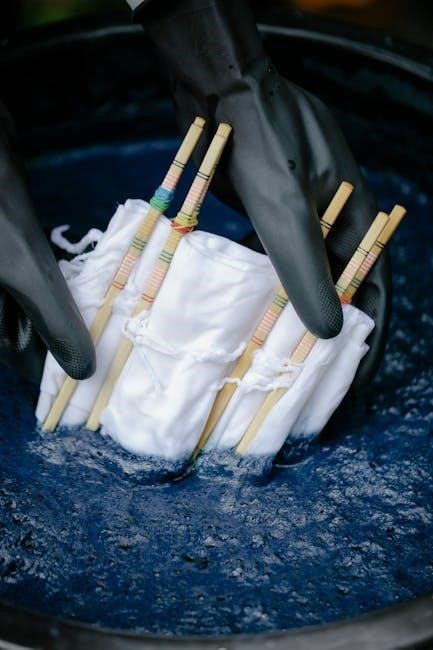
Rheem Tankless Water Heater Troubleshooting Manual: A Comprehensive Guide
Navigating Rheem tankless water heater issues requires understanding error codes, potential fixes, and preventative maintenance; this guide offers a detailed approach to resolving common problems.
Addressing issues like ignition failures (code 11), combustion faults (code 00), and overheat conditions (code 446) is crucial for restoring hot water efficiently.
Regular descaling and filter cleaning, alongside professional inspections, will ensure optimal performance and extend the lifespan of your Rheem tankless system.
Understanding Rheem Tankless Water Heater Basics
Rheem tankless water heaters represent a significant shift from traditional tank-style systems, offering on-demand hot water and increased energy efficiency. Unlike their counterparts, these units don’t continuously heat a reservoir; instead, they activate only when hot water is needed, eliminating standby heat loss.
Key components include a flow sensor, which detects water usage and triggers the heating process, a gas valve (for gas models) or electric element, and a heat exchanger to rapidly heat the water. Understanding these basics is vital for effective troubleshooting.
Furthermore, Rheem tankless heaters utilize sophisticated electronic controls and sensors to monitor performance and display error codes when issues arise. These codes, like S103 or 446, provide valuable clues about the nature of the problem, guiding users towards targeted solutions. Familiarizing yourself with these fundamental principles will empower you to diagnose and address common issues more effectively.
Common Rheem Tankless Water Heater Problems
Rheem tankless water heaters, while reliable, can experience several common issues. A frequent complaint is fluctuating water temperature, often linked to scale buildup within the heat exchanger, requiring descaling. Another prevalent problem is ignition failure, indicated by error code 11, stemming from a faulty igniter or gas valve.
Flame sensor issues (error code 12) disrupt the heating process, while water temperature sensor problems (codes 103/S103) lead to inaccurate temperature readings. Overheat conditions (code 446) can occur due to restricted water flow or malfunctioning components.
Additionally, combustion faults (code 00) signal problems with gas supply or ventilation. These issues often necessitate professional attention, but understanding the symptoms allows for informed communication with a technician and potentially quicker resolution of the problem.

Decoding Rheem Error Codes
Rheem tankless water heater error codes provide vital diagnostic information, pinpointing the source of malfunctions and guiding troubleshooting efforts for efficient repairs.
Error Code 00: Combustion Fault

Error code 00 on a Rheem tankless water heater signals a critical issue: a combustion fault. This indicates the unit is failing to establish or maintain stable combustion during operation. Several factors can trigger this error, demanding a systematic approach to diagnosis.
Initially, verify the gas supply is adequately connected and the gas valve is fully open (for gas models). Inspect the vent system for obstructions, ensuring proper airflow for combustion. A blocked vent can lead to incomplete combustion and trigger the fault.
Furthermore, examine the burner assembly for debris or damage; A dirty or malfunctioning burner can prevent proper ignition. Check the igniter and flame sensor; a faulty igniter may struggle to light the gas, while a defective flame sensor won’t detect the flame, leading to a shutdown. Professional assistance is often required for complex combustion issues.
Error Code 11: Ignition Failure
Rheem tankless water heater error code 11 specifically points to an ignition failure. This means the unit is attempting to ignite the burner, but is consistently unsuccessful in establishing a flame. Several components could be responsible for this issue, requiring careful inspection.
First, check the gas supply to ensure it’s turned on and sufficient pressure is reaching the unit (for gas models). A weak gas supply can prevent ignition. Next, inspect the igniter itself; a failing igniter may not produce a strong enough spark to light the gas.
Additionally, verify the flame sensor is clean and properly positioned. A dirty or misaligned flame sensor might not detect the flame, even if ignition occurs, causing a repeated failure. If these checks don’t resolve the issue, professional diagnosis and repair are recommended.
Error Code 12: Flame Sensor Issue
A Rheem tankless water heater displaying error code 12 indicates a problem with the flame sensor. This crucial component verifies the presence of a flame after ignition, ensuring safe and efficient operation. When the sensor malfunctions, the unit shuts down as a safety precaution.
Initial troubleshooting involves inspecting the sensor and its wiring connections. Look for any signs of corrosion, damage, or loose connections. Clean the flame sensor with fine steel wool to remove any carbon buildup that might be interfering with its function.
If cleaning doesn’t resolve the issue, the flame sensor itself may be faulty and require replacement. Proper sensor placement is also vital; ensure it’s correctly positioned to detect the flame. If you’re uncomfortable working with gas appliances, consult a qualified technician.
Error Code 103/S103: Water Temperature Sensor Problems
Rheem tankless water heater error codes 103 and S103 signal issues with the water temperature sensor. This sensor monitors the water’s temperature as it passes through the unit, providing critical data for proper operation. A faulty sensor can lead to inaccurate temperature readings or prevent the heater from functioning altogether.
Troubleshooting begins with checking the sensor’s wiring and connections for looseness or corrosion. Inspect the sensor itself for any physical damage. Sometimes, simply reconnecting the wiring can resolve the issue. However, if the problem persists, the sensor likely needs replacement.
Accurate temperature regulation is vital for safety and efficiency. Replacing a faulty water temperature sensor requires careful attention to detail; if you lack experience, it’s best to call a qualified technician to ensure correct installation and operation.

Error Code 303: Gas Valve Malfunction
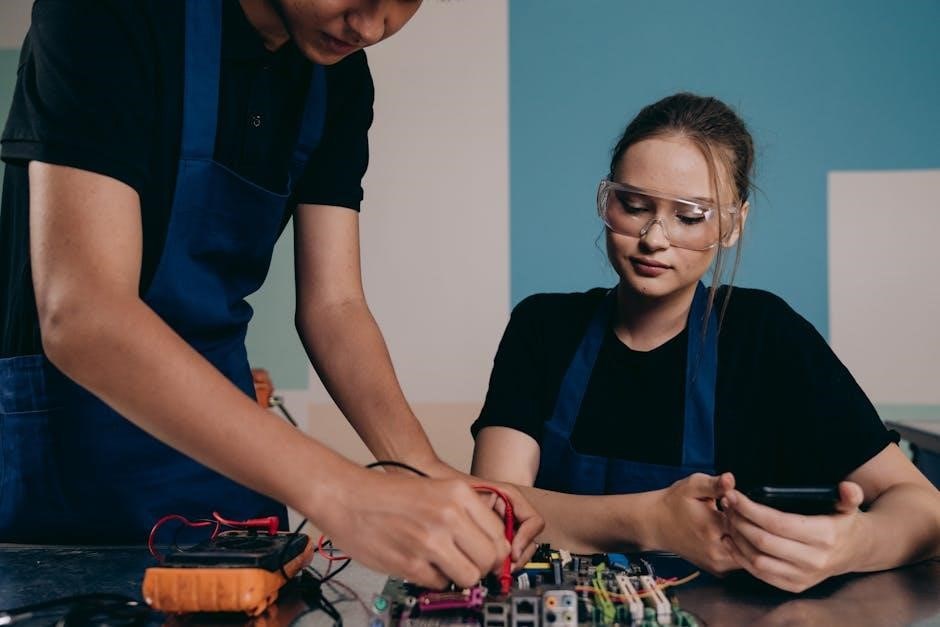
The Rheem tankless water heater error code 303 indicates a malfunction within the gas valve assembly. This valve controls the flow of gas to the burner, and a failure prevents the heater from producing hot water. This is a serious issue requiring careful attention and potentially professional intervention.
Initial checks should focus on the gas supply itself. Ensure the gas is turned on and that there are no leaks. However, diagnosing the valve itself requires specialized knowledge and tools. Attempting repairs without proper training can be dangerous.
A faulty gas valve often necessitates replacement. Due to the inherent risks associated with gas appliances, it is strongly recommended to contact a qualified HVAC technician for diagnosis and repair. Never attempt to bypass or modify the gas valve.
Error Code 446: Overheat Condition
Rheem tankless water heater error code 446 signals an overheat condition, indicating the unit has reached a dangerously high temperature. This triggers a safety mechanism to shut down the heater, preventing potential damage or hazards. Addressing this promptly is crucial for restoring functionality and ensuring safety.
Common causes include restricted water flow, scale buildup within the heat exchanger, or a malfunctioning temperature sensor. Insufficient water circulation prevents proper heat dissipation, leading to overheating. Descaling the unit regularly can mitigate scale buildup.
Before attempting any troubleshooting, ensure the unit is powered off. Inspect the water inlet filter for obstructions; If the problem persists, professional assistance is recommended. Ignoring this error can lead to component failure and potentially dangerous situations.
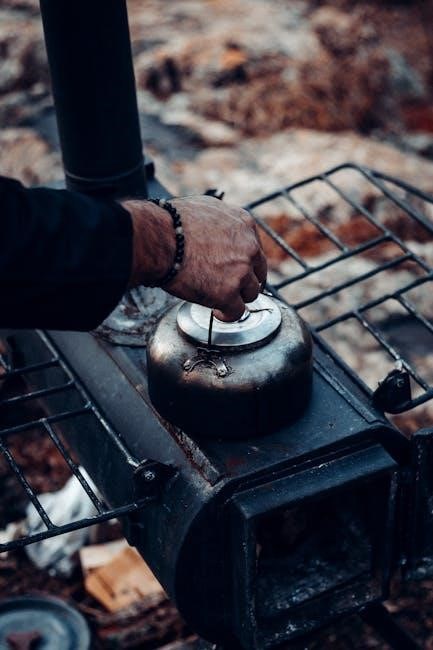
Troubleshooting Steps: No Hot Water
Begin by verifying the power and gas supply, then check water flow; these are fundamental steps when your Rheem tankless heater fails to produce heat.
Checking the Power Supply
First, ensure the water heater is receiving power. Locate the dedicated circuit breaker in your electrical panel and verify it hasn’t tripped. If tripped, reset it, but if it immediately trips again, there’s likely a short circuit requiring professional attention.
For electric models, confirm the voltage is correct using a multimeter, adhering to all safety precautions. Check the wiring connections at the unit itself, looking for loose connections or signs of damage.
If the unit has a power switch, ensure it’s in the ‘on’ position. Some models have a remote control; verify its batteries aren’t depleted and it’s properly communicating with the heater. A lack of power is a common cause, so thorough investigation is essential before proceeding to other troubleshooting steps.
Remember to always disconnect power before inspecting any electrical components.

Inspecting Gas Supply (for Gas Models)
Begin by verifying the main gas supply valve is fully open. Check if other gas appliances in your home are functioning correctly; if not, the issue might be with the main gas line, requiring a utility company’s attention.
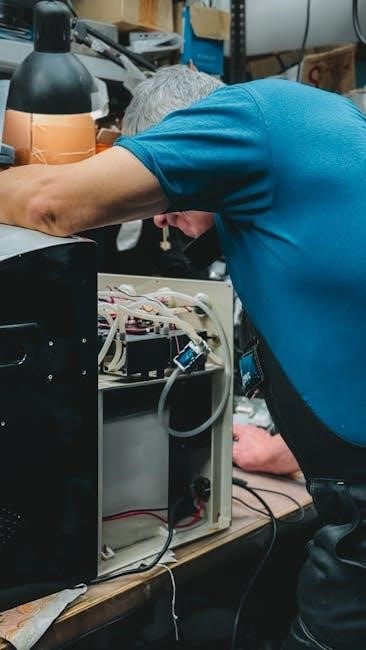
Inspect the gas shut-off valve specifically for the water heater, ensuring it’s in the open position. Look for any visible damage to the gas line leading to the unit. Never attempt to repair gas lines yourself; this is a job for a qualified professional.
Confirm the gas pressure is within the manufacturer’s specified range. A low gas pressure can cause ignition failures or insufficient heating. If you suspect a gas leak, immediately shut off the gas supply and contact your gas company or a qualified technician.
Safety is paramount when dealing with gas; prioritize professional assistance if you’re unsure about any aspect of the inspection.
Verifying Water Flow
Ensure the cold water inlet valve to the tankless heater is fully open, allowing sufficient water to reach the unit. Check for any kinks or obstructions in the water supply line that could restrict flow. A minimum flow rate is required to activate the heater; insufficient flow will prevent it from firing up.
Inspect the water filter (if installed) for sediment buildup, as this can significantly reduce water flow. Clean or replace the filter as needed. Test multiple faucets simultaneously to see if the low hot water issue persists, indicating a problem with the heater itself rather than a single faucet.
Confirm there are no closed valves on any hot water lines. Low water pressure throughout the house could also be a contributing factor, requiring investigation of the main water supply.
Adequate water flow is essential for proper operation.

Maintenance and Prevention
Proactive descaling, air filter upkeep, and scheduled professional inspections are vital for maintaining optimal performance and preventing future issues with your Rheem unit.
Consistent maintenance extends the lifespan and ensures efficient operation, avoiding costly repairs and maximizing hot water availability.
Regular Descaling Procedures
Mineral buildup, a common issue in tankless water heaters, significantly reduces efficiency and can lead to component failure. Descaling removes these deposits, restoring optimal performance. Rheem recommends descaling frequency based on water hardness – typically annually, but more often in areas with hard water.
The process usually involves circulating a descaling solution (often vinegar or a commercially available descaling kit) through the unit for a specified duration, following the manufacturer’s instructions precisely. Always flush the system thoroughly after descaling to remove any residual cleaning solution.
Ignoring descaling can result in reduced hot water capacity, increased energy consumption, and ultimately, a shortened lifespan for your Rheem tankless water heater. Proper descaling is a preventative measure that saves money and ensures reliable operation.
Consult your Rheem owner’s manual for specific descaling instructions tailored to your model.
Air Filter Cleaning/Replacement
Rheem tankless water heaters utilize air filters to protect internal components from dust and debris, ensuring efficient combustion and preventing malfunctions. A clogged air filter restricts airflow, potentially causing ignition issues or triggering error codes like a combustion fault.
Regular inspection of the air filter is crucial. Depending on usage and environmental conditions, cleaning or replacement may be necessary every 3-6 months. Filters can often be vacuumed to remove loose particles, extending their lifespan. However, disposable filters should be replaced entirely when visibly dirty or damaged.
Locating the air filter varies by model; consult your owner’s manual for specific instructions. A clean air filter promotes optimal performance, prevents unnecessary strain on the unit, and contributes to the longevity of your Rheem tankless water heater.
Neglecting this simple maintenance task can lead to more significant and costly repairs.
Professional Inspection Schedule
While diligent homeowner maintenance is vital, a professional inspection of your Rheem tankless water heater is recommended annually to ensure optimal performance and safety. Qualified technicians possess the expertise to identify subtle issues often undetectable during routine checks.
During an inspection, a professional will assess gas line connections (for gas models), verify proper venting, check for corrosion, and evaluate the overall system health. They can also perform a thorough descaling if needed, removing mineral buildup that impacts efficiency.
Early detection of potential problems, like developing leaks or failing components, can prevent costly repairs down the line. A professional can also update software and ensure your unit complies with current safety standards.
Adhering to a regular inspection schedule maximizes the lifespan and reliability of your Rheem tankless system.
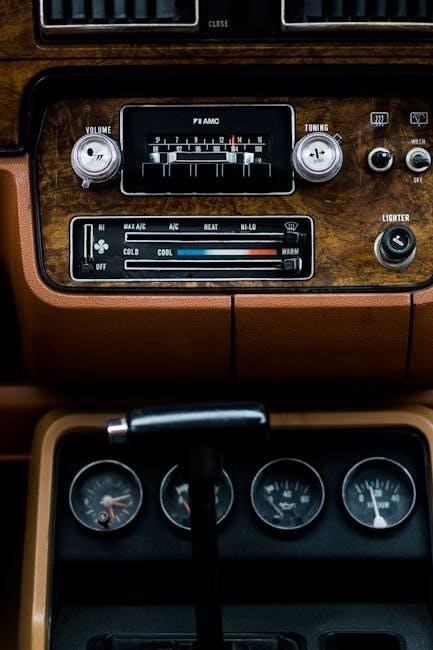
Safety Precautions
Prioritize safety by detecting gas leaks immediately and ensuring electrical work is done by qualified professionals; always disconnect power before servicing.
Follow manufacturer guidelines and heed warning signs to prevent hazards during troubleshooting and maintenance of your Rheem tankless heater.
Gas Leak Detection
Recognizing and responding to a gas leak is paramount when dealing with gas-powered Rheem tankless water heaters. If you suspect a leak – a distinct sulfur-like or rotten egg odor is a key indicator – immediately take action. Do not operate any electrical switches, as even a small spark can ignite the gas.
Evacuate the premises promptly, ensuring all occupants and pets leave the area. Once safely outside, contact your local gas company or emergency services from a neighbor’s phone or mobile device. Do not use your phone inside the building.
Never attempt to locate the leak yourself; leave that to trained professionals equipped with the appropriate detection tools. After the gas company has addressed the leak and deemed the area safe, a qualified technician should inspect the Rheem unit and gas lines before resuming operation. Regular inspection and maintenance can help prevent leaks.
Electrical Safety
Working with electrical components of a Rheem tankless water heater demands strict adherence to safety protocols. Always disconnect the power supply at the circuit breaker before attempting any inspection or repair. Never work on the unit with wet hands or while standing in a damp environment, as water conducts electricity.
Ensure proper grounding of the unit to prevent electrical shock. If you are uncomfortable working with electrical wiring, immediately contact a qualified electrician. Do not bypass safety features or tamper with wiring connections.
Inspect wiring for damage – frayed insulation or loose connections – and replace any compromised components. Regularly check the circuit breaker dedicated to the water heater to ensure it’s functioning correctly. Prioritize safety; electrical hazards can be life-threatening. A professional inspection is recommended annually.